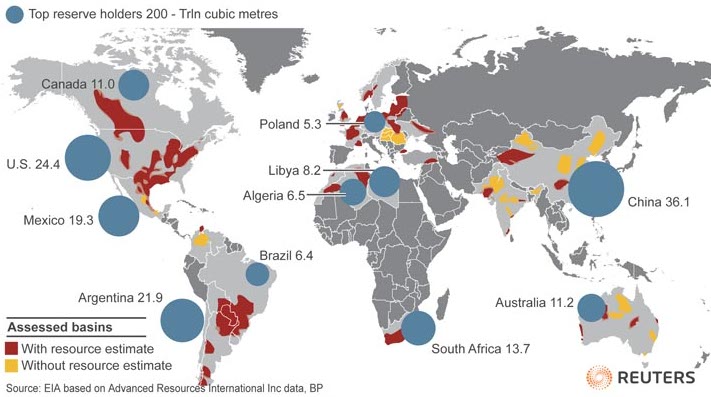
It’s a race to see who invests wisely and can emulate North American successes while adapting shale fracking and drilling technologies to unique (and often quite different) geological formations.
“Everybody around the world has taken notice [of shale] the past few years. They’re taking notice and starting to wonder if they can get a part of the same energy revolution that we have here,” said Daniel Simmons, an energy scholar with the Institute of Energy Research.

